If you are into gardening so much, then you should have an overall knowledge about how to clean rusty garden tools properly and correctly.
Don’t you love it when you have ideas of new plants or flowers, and you get to make it happen? Or you probably want to freshen up your garden with a little trim here and there.
The idea that you can head to the storage room and take all of your gardening tools must be exciting.
But when you take out all of those tools, you just find out that all of them are rusty.
Of course, those tools won’t function as well as expected. And just to add the extra work, you need to clean those tools first before you can use them.
It’s a good thing that you don’t always have to rely on wire brush to clean the rust off.
There are several methods that you can choose, and not all of them require rough treatments.
Some of them need a simple formula that you can find at your kitchen.
Some may require a purchase from your side, but it won’t break the bank; trust me.
How to Clean Rust from Garden Tools Rag

Whether you are a seasoned gardener or not, you should know about how to clean rusty garden tools properly. It will keep your tools in a good shape.
And most importantly, you don’t have to buy more tools to replace the rusty and old tools of yours.
Not only it saves you a lot of money, but it also gives you a sense of pride when you are able to maintain your tools in good condition and good shape.
The rag here is basically a part of the clean-up, so it will be needed later.
We are going to talk about different methods and different ingredients.
Some methods may use cola, while the others may use lemon or baking soda.
Once those tools are soaked or rubbed or scrubbed, then you need to wipe them off with a clean rag or paper towel.
You want to make sure that your tools are completely dry and clean before you apply the protective oil.
If you don’t want to deal with those several methods on how to clean rusty garden tools, then you should prevent them from happening.
Aside from the knowledge to tackle the rust, you should also know how to prevent it from happening too.
It means that you should look into proper ways to care and maintain your gardening tools.
How to Clean Rust off Tools with Vinegar
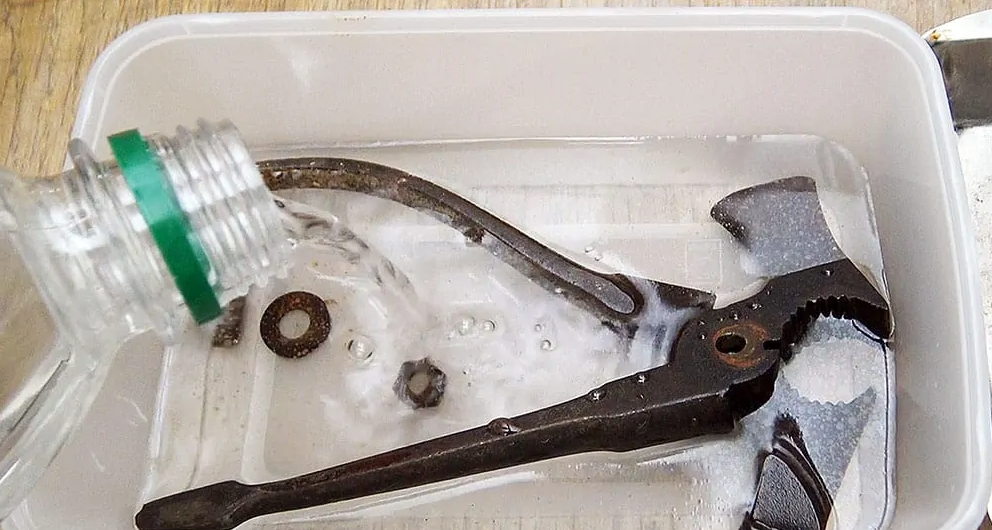
Your kitchen-ready ingredient is great to remove the rust effectively. Vinegar, or apple cider vinegar, is often used as one effective method on how to clean rusty garden tools.
You simply give it a ‘bath’ and you won’t have to worry about anything.
Simply mix the same (equal) parts of vinegar and water. Then soak the rusty tools inside the mix.
If you have several rusty tools, it would be a good idea to have a big container where all of the tools can fit just nicely.
Whether your tools are fully covered in rust or there are only small parts of the rust covering them, you don’t have to worry about anything. This method works like a charm.
Just make sure that the concentration of the mix should be different, depending on the rust level.
If your tools are only a bit rusty, then you don’t need to have the whole bottle of vinegar.
But if they are covered in the rust (and the rust is pretty thick too), then maybe you need a bottle.
When you soak the tools, the acidity would make all of those rusts go away.
Be sure to soak them for at least 24 hours to make clean up less a headache.
Remove your tools from the mixture. By using a scouring pad, a crumpled aluminum foil piece, steel wool, or a brush, rub the rust away.
You don’t need to scrub them hard.
You only need to scrub them a little to the rust would come off easily.
Use circular movement to make the clean-up more efficient.
Pay attention to certain tools, like garden scissors or pruning shears, because they require extra attention.
During the scrub, make sure that you clean off the nooks, crannies, and gears entirely. It will prevent the rust from spreading out.
After you are done, dry the tools completely. Use a paper towel or a dry cloth or a rag.
After you are sure that the tools are completely dried off, apply a lubricating and protecting oil. You need to ensure that the tools are dry because any remaining moisture will lead to another rust.
Moreover, if the tools are dry, they can absorb the oil in the maximum way, so pay a careful attention to this step.
After you are done, you can cover the tools in any mineral oil of your preference.
Feel free to use Multi-Purpose 3-in-One oil or WD40 to add protective layer to the tools.
How to Remove Rust from Shovels
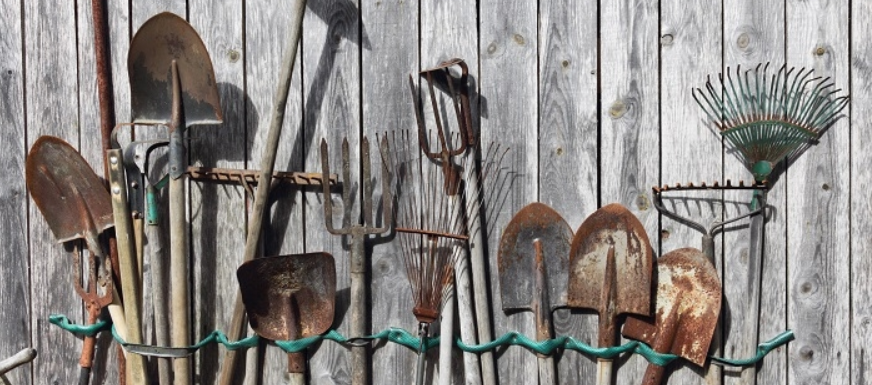
How do you maintain your shovels?
In how to clean rusty garden tools, remove the surface soil by using the hose.
If the residue still remains, use a wire brush and warm (soapy) water to scrub the blade.
Use steel wool to scrub the blade. Make sure that there is no rust or residue left behind and create a smooth finish.
Make a solution (consisting of one part bleach and nine parts water). Soak the shovel in it to kill bacteria and disease. Dry it in the sun.
By using oiled cloth, rub the surface to prevent rusting.
Feel free to use rust-inhibitor or petroleum-based lubricant spray.
Use damp and soft cloth to wipe the handle.
How to Keep Garden Tools from Rusting
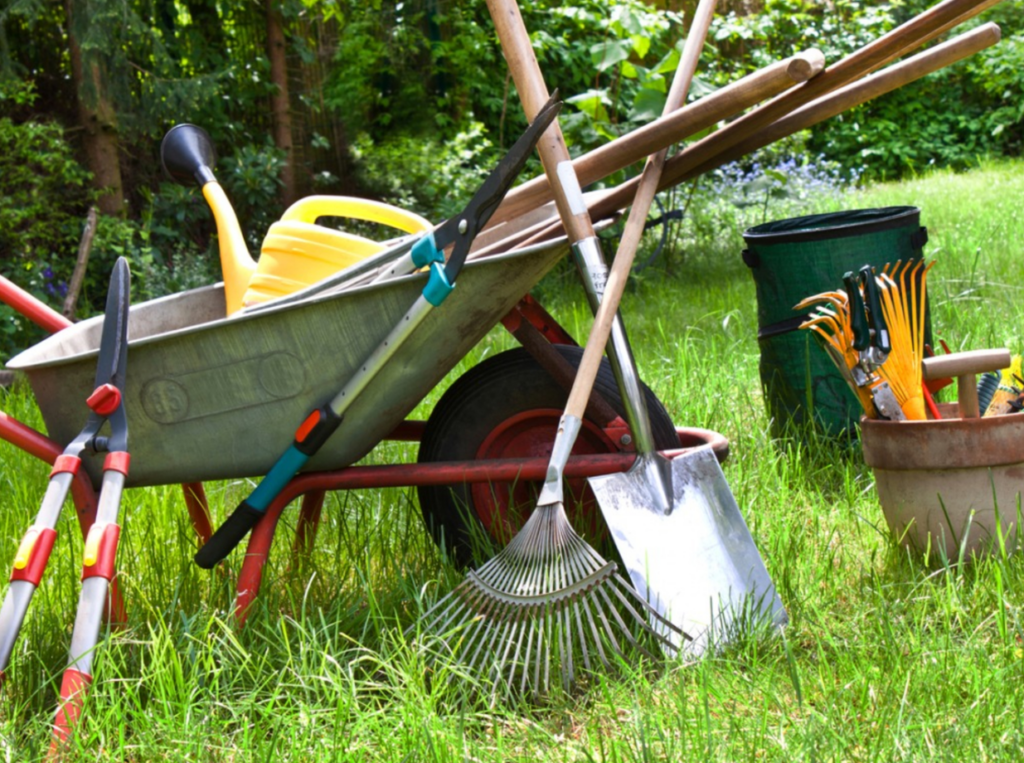
As it was mentioned before, everyone should know not only about how to clean rusty garden tools, but the preventive methods.
If you don’t clean or care for your tools, you can’t expect them to stay in good condition by themselves.
Proper cleaning, caring, and storing will make sure that your tools stay in good shape for a long time.
That’s why you need to dedicate enough time for the cleaning and caring.
Understand why rust happens from the first place, and how you can deal with the situation.
Here’s what you need to know about caring for your gardening tools:
- Make sure to s tore them in areas with dry air. It’s recommended to store those tools in a garage or indoor location. What if you don’t have enough space in your garage and you need to store your tools outdoor? Well, you need to have a cabinet (with a door) or an enclosed container so your tools won’t be exposed to the air
- If you want to keep them outdoors, consider hanging them on hooks. It will prevent them to sit in water for a prolonged time. If you do have a cabinet with a door (like in the previous way), you can consider installing hooks inside the cabinet so you can hang those tools instead of keeping them sitting or lying – or even piling against one another,
- Water is one of the reasons why tools are getting rusty. It’s imperative that you clean them after every usage. And make sure that you dry them off completely so there won’t be any remaining water that can cause new rust.
- It’s mandatory to perform regularly cleaning, especially if you are attached to your tools. Metal components and blades, for instance, should be cleaned thoroughly – before and after every usage.
- Oil is good to prevent rust (so you don’t have to deal with how to clean rusty garden tools), but not all oil is good. It’s okay to use motor oil, but veggie oil has better quality and outcome. Not only it is just effective as the motor oil, but it’s more eco-friendly and less toxic too.
- Consider sterilizing the tools before using them by applying rubbing alcohol. It can significantly reduce the possibility of getting rusted along the way.
It’s obvious that the best solution of how to clean rusty garden tools is to prevent it from happening.
Now that you already know how to do them correctly and properly, you can maintain your garden tools in a much better way.
Also read: How to Remove Rocks from Soil
How to Clean Garden Tools
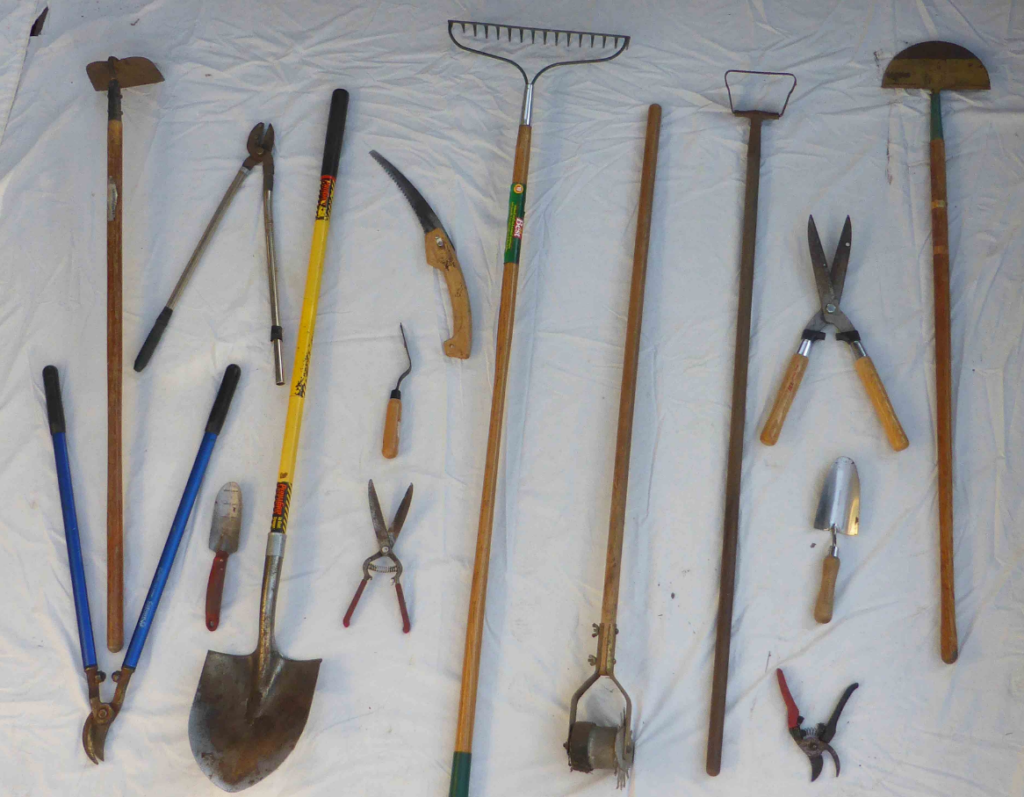
You don’t have to be a rocket scientist just to be able to clean your gardening tools.
There are several easy and simple tricks that you can perform to ensure that all of your tools would be rust-free.
- Remove the dirt. After you use it, use a (powerful) garden hose to remove the dirt. If there is any stubborn dirt still attached to your tools, use a putty knife to remove them
- Remove the sap. You only need to pour a little lighter fluid to a cloth or rag. Wipe your tools with the rag to remove the sticky sap.
- Soak the tools. If you have removed the grime and caked-on dirt, soak the tools in hot water. You can add a dish soap or a mild detergent to add a kick of cleaning power
- Rinse and dry. After the soak, rinse it off with clean water. Then dry your tools with old towel or rag. Never store your tools in wet condition because it will lead to premature rust. Again, make sure to dry everything off completely.
- Perform quick clean routine. Fill up a bucket with sand and add a cup of veggie oil. Every time you have a heavy gardening day, dip your tools in that bucket. It will protect the finish and remove the dirt.
- Disinfect the tools. If you have plants with bacterial or fungal issues, it’s a must to disinfect the tools. You may want to buy and keep disinfectant wipes (the bleach-free types) so you can remove the bacteria, fungus, or sap from your shears. It will prevent bacterial or fungal spread from one plant to another, especially with your tools as the medium
- Perform a sanitizing soak. You can prevent or stop infestation spread by performing this method. Mix a gallon of water with 2 cups of bleach, so you make a bleach solution. Simply soak the tools in it. Afterwards, don’t forget to rinse them all and then dry them completely to ensure that there is no water or moisture left behind.
How to Sharpen Garden Tools
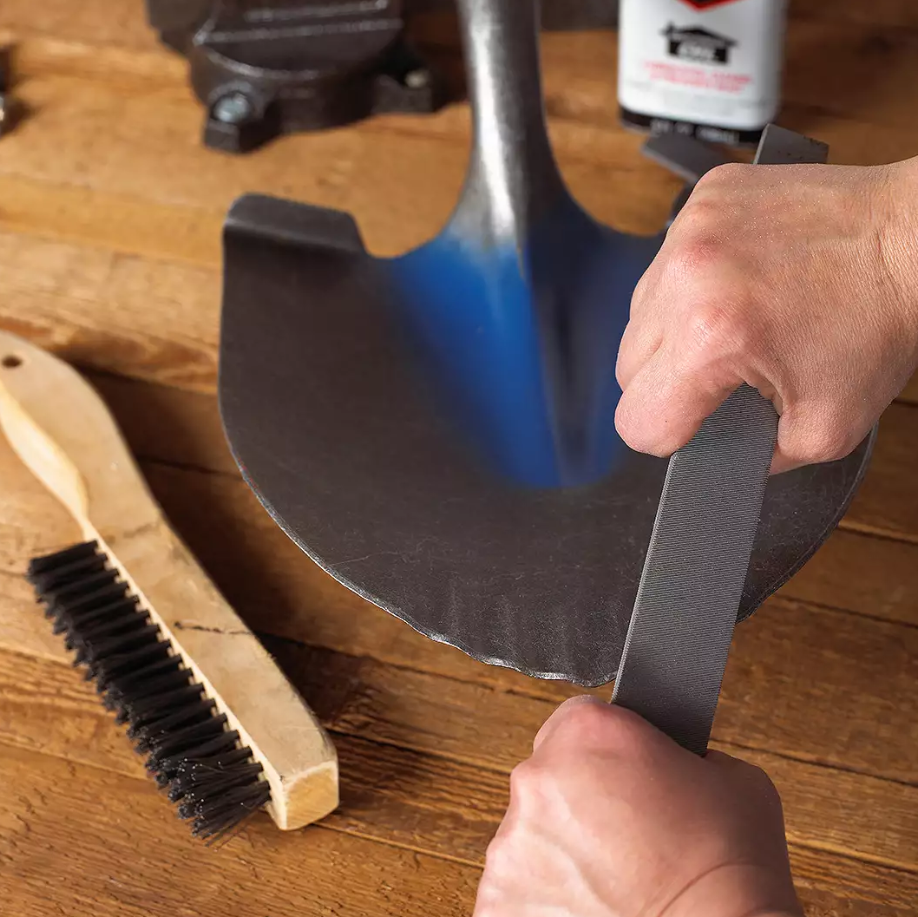
Aside from cleaning your garden tools, it would be a good idea to know how to sharpen them.
After all, rust will make sharp tools dulls. And when it happens, those tools are no longer functional.
Tools with sharp and clean edges can get into the soil easily (and with less efforts).
To sharpen trowels, spades, and more, use a metal file. Pass it over the blade’s edges. Make sure to maintain shallow angle.
Work along both the blade’s front and also back side.
After you are done, use oil to seal the edges.
If you have tools with wooden handles, you can clean them with a sanding sponge or a sandpaper.
Afterwards, use teak oil (or any other protective and natural oil) to polish it.
How to Clean Rush from Garden Tools Steel Wool
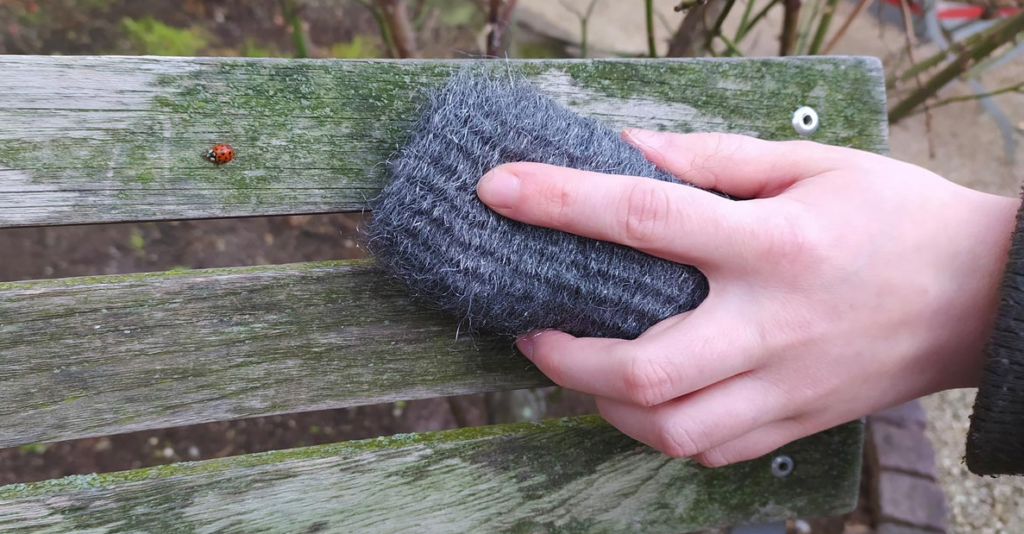
Basically, you can use steel wool, wire brush, or scouring pad to remove the rust after you soak them in vinegar.
But vinegar isn’t the only solution that you can use in how to clean rusty garden tools. You can use cola. Thanks to its phosphoric acid content, it can actually dissolve rust.
You can use a big bottle of cola and pour the content into a container. Soak your tools in that container for 24 hours.
Afterwards, rinse them (with running water). While doing so, scrubs them with a wire brush or steel wool or scouring pad.
You can use the same method by using lemon juice and salt. Mix equal parts of water, salt, and lemon juice. Soak your tools in the mix for 24 hours.
After you are done, perform similar methods above while using steel wool to scrub off the rust.
Conclusion
In the end, you have more than one option to deal with the rust.
Prevention is the best way, but in the event that rust already sets in, it’s never too late to start dealing with it.
Now that you know about how to clean rusty garden tools, you can perform better care and maintenance for your tools.